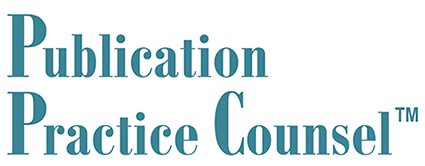Strategies to Improve Compliance with Disclosure and Publication of Clinical Trial Results
Published on November 7, 2016

This morning, I came across a recent blog article by Ed Silverman regarding results of clinical trials continuing to remain undisclosed - https://www.statnews.com/pharmalot/2016/11/03/clinical-trials-sanofi-shire-glaxo/. What’s interesting to note in this article is that the problem of clinical trials non-disclosure is not confined to biopharmaceutical industry alone; this is an issue also with universities, medical centers, and NIH funded trials. Also, the article notes pharma companies to be associated with highest non-compliance based on the number of unreported trials. However, based on the percentage of trials remaining undisclosed, aside from Ranbaxy (with 100% non-compliance), academic institutions have the highest non-compliance rates. Other recently published studies have also reported non-compliance from both industry as well as academic institutions and NIH funded trials (Chen et al. BMJ 2016;352:i637; Anderson et al. NEJM 2015;372:1031-9; Ross et al. BMJ 2012;344:d7292).
Although there may be limitations on how data for compliance was collected, we have been hearing about this issue for many years. Instead of taking this negatively, I hope that we can have some positive actions to further improve the situation. Here I share my thoughts on how we can continue to improve compliance with disclosure and publication of clinical trial results:
- Changing Our Mindset. Over the years, we have seen increased government regulations and more stringent policies from research funders for clinical trial disclosure in an effort to improve transparency. Having such regulations and policies begs the question—must there be laws and regulations to do what is simply an ethical obligation? If the entire medical research community, including the industry, academic institutions, and researchers, took accountability and responsibility to ensure transparency, then would there be any need for such laws and regulations at all?
There are some who continue to believe in doing what’s required rather than what’s the right thing to do. Let’s think about this for a moment. First, the main purpose for those in the health care industry is patient well-being and safety. Second, clinical trials would be impossible without patients and research subjects who volunteer themselves to participate in studies in the hopes of advancing medical science for future generations. Withholding information slows down scientific progress and can jeopardize patient well-being. - Set Appropriate Policies and Procedures for Clinical Trial Disclosure and Publications. Based on my experience, company and institutional employees are more likely to do what is required of them based on company or institutional policies and procedures as it can have direct impact on their performance appraisal, promotion, and career. Along with policies and procedures, it’s also important to make sure that employees are held accountable for ensuring compliance with such policies.
- Allocate Adequate and Appropriate Resources. Often even with the right intent, lack of or insufficient resources (i.e., financial and human resources) can result in incomplete compliance with publication of results. Getting a paper published in a journal is an extremely long and resource-intensive process; and preparing clinical trial results summary and posting on registries also requires appropriate resources.
I believe that publication professionals can play an important role in helping to ensure that all clinical trials are accounted for disclosure and publication. Generally, publication professionals are underutilized by academic institutions for non-industry-sponsored trials. Adequate and appropriate resource allocation by industry as well as academic institutions, along with use of strategies to minimize costs (e.g., targeting appropriate journals and utilizing publishing platforms to minimize rejections) can help to improve publication success rates and compliance with results disclosure. - Develop and Execute Clinical Trial Disclosure and Publication Plans. Preparation and execution of an integrated clinical trial disclosure and publication plans can help in avoiding any gaps while ensuring that results of all trials are disclosed and published. Again, publication professionals can play an integral role and collaborate with clinical disclosure teams to ensure compliance.
- Monitor Compliance with Clinical Trial Disclosure and Publication. Even if companies and institutions have policies and procedures in place for clinical trial disclosure and publication, they will not be able to identify any gaps in compliance without an appropriate monitoring program. Establishing and strengthening the company’s and academic institution’s compliance monitoring efforts can be highly valuable in improving compliance with these obligations. Third party consultants can also help with compliance monitoring and provide an independent review.
These are some strategies to help further improve compliance with dissemination of clinical trial results. I would love to hear from you on additional strategies. Please feel free to visit us and share your thoughts at www.publicationpracticecounsel.com.
© 2016-2024 Publication Practice Counsel; Truposha, LLC



